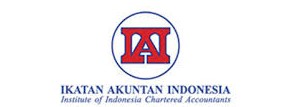Pengaruh Fraud Hexagon Terhadap Manajemen Laba Berdasarkan M-score yang Dimodifikasi
Abstract
This research aims to examine the effect of the fraud hexagon on earnings management using a modified M-score. The modified M-score formula in this study comes from research by Narsa et al (2023) using five original ratios and four additional ratios. This research is causality research with a quantitative approach. The data in this research comes from company annual reports obtained from the Indonesian Stock Exchange website and the websites of the companies studied. This research uses a purposive sampling technique and the sample in this research consists of 39 manufacturing companies (food & beverage subsector, chemical subsector, and metals and similar subsector) in 2020-2022. To test the hypothesis, this research uses the logistic regression analysis method. The results of this research show that ineffective monitoring has a positive and significant effect on earnings management. while financial stability, change in auditor, change in director, frequent number of CEO pictures, and projects with government have no effect on earnings management.
References
Abbas, A. (2017). Earnings Fraud And Financial stability. Asia Pacific Fraud Journal, 2, 117.
Achmad, T., Ghozali, I., & Pamungkas, I. D. (2022). Hexagon Fraud: Detection of Fraudulent Financial Reporting in State-Owned Enterprises Indonesia. Economies, 10(1).
Anh, N. H., & Linh, N. H. (2016). Using the M-score Model in Detecting Earnings management: Evidence from Non-Financial Vietnamese Listed Companies.
Beneish, M. (1999). The Detection of Earnings Manipulation. Financial Analysts Journal - FINANC ANAL J, 55, 24–36.
Corsi, C., Di Berardino, D., & Cimbrini, T. Di. (2015). Beneish M-score and detection of earnings management in Italian SMEs. RATIO MATHEMATICA, 28, 65–83.
Cressey, R. D. (1953). Other People’s Money: A Study in the Social Psychology of Embezzlement. Free Press.
Crowe Hortwarth. (2011). Why the Fraud Triangle is No Longer Enough. Www.Crowe.Com
Fatkhurrizqi, M. A., & Nahar, A. (2021). Analisis Fraud Triangle dalam Penentuan Terjadinya Financial Statement Fraud. FINANCIAL: JURNAL AKUNTANSI, 7(1), 14-25.
Egbunike, P. A., & Igbinovia, I. M. (2018). Threat of Bankruptcy and Earnings management in Nigerian Listed Banks. ACTA UNIVERSITATIS DANUBIUS, 14.
Faradiza, S. A. (2019). Fraud pentagon dan kecurangan laporan keuangan. EkBis: Jurnal Ekonomi Dan Bisnis, 2(1), 1–22.
Fathmaningrum, E. S., & Anggarani, G. (2021). Fraud Pentagon and Fraudulent Financial Reporting: Evidence from Manufacturing Companies in Indonesia and Malaysia. Journal of Accounting and Investment, 22(3), 625–646.
Fischer, M., & Rosenzweig, K. (1995). Attitude of Students and Accounting Practitioners Concerning the Ethical Acceptability of Earnings management. Journal of Business Ethics, 14, 433–444.
Ghozali, I. (2018). Aplikasi Analisis Multivariate Dengan Program IBM SPSS 25. Badan Penerbit Universitas Diponerogo.
Hayati, & Sirrul. (2016). Pengaruh Financial stability, Managerial Ownership Dan Ineffective monitoring Terhadap Earnings management Studi Pada Perusahaan Di Bei. Jurnal Ilmiah Rinjani : Media Informasi Ilmiah Universitas Gunung Rinjani, 4.
Hogan, C., Rezaee, Z., Riley, J., & Velury, U. (2008). Financial Statement Fraud: Insights from the Academic Literature. Auditing, 27, 231–252.
Imtikhani, L., & Sukirman. (2021). Determinan Fraudulent Financial Statement Melalui Perspektif Fraud Hexagon Theory Pada Perusahaan Pertambangan. Jurnal Akuntansi Bisnis, 19(1).
Jensen, M. C., & Meckling, W. H. (1976). Theory of the firm: Managerial behavior, agency costs and ownership structure. Journal of Financial Economics, 3(4), 305–360.
Kajian Sektor Manufaktur Indonesia 2021. (2021). Badan Perencanaan Pembangunan Nasional (Bappenas).
Kamarudin, K. A. (2014). The Effects of Audit Committee Attributes on Fraudulent Financial Reporting.
Khairi, H., & Alfarisi, M. F. (2019). Analisis Fraud Diamond Theory dalam Mendeteksi Terjadinya Manajemen Laba pada Laporan Keuangan Perusahaan. Jurnal Manajemen, 10(2), 176.
Lou, Y.-I., & Wang, M.-L. (2009). Fraud risk factor of the fraud triangle assessing the likelihood of fraudulent financial reporting. Journal of Business & Economics Research (JBER), 7(2).
Lu, W., & Zhao, X. (2020). Research and improvement of fraud identification model of Chinese A-share listed companies based on M-score. Journal of Financial Crime, 28(2), 566–579.
Marks, J. (2012). The Mind Behind the Fraudsters Crime: Key Behavioral and Environmental Elements.
Martantya, & Daljono. (2013). Pendeteksian Kecurangan Laporan Keuangan Melalui Faktor Risiko Tekanan Dan Peluang (Studi Kasus Pada Perusahaan Yang Mendapat Sanksi Dari Bapepam Periode 2002-2006). Diponegoro Journal of Accounting, 2(2), 1–12.
Narsa, N. P. D. R. H., Afifa, L. M. E., & Wardhaningrum, O. A. (2023). Fraud triangle and earnings management based on the modified M-score: A study on manufacturing company in Indonesia. Heliyon, 9(2).
Ramirez-Orellana, A., Martínez-Romero, M. J., & Mariño-Garrido, T. (2017). Measuring fraud and earnings management by a case of study: Evidence from an international family business. European Journal of Family Business, 7.
Rannen, J. E., & Yaari, V. (2008). Earnings management: Emerging Insights in Theory. Practice and Research, New York, Springer.
Repousis, S. (2016). Using Beneish model to detect corporate financial statement fraud in Greece. Journal of Financial Crime, 23(4), 1063–1073.
Sagala, S. G., & Siagian, V. (2021). Pengaruh Fraud Hexagon Model Terhadap Fraudulent Laporan Keuangan pada Perusahaan Sub Sektor Makanan dan Minuman yang Terdaftar di BEI Tahun 2016-2019. Jurnal Akuntansi, 13(2), 245–259.
Schipper, Katherine. (1989). Earnings management. Commentary on Earnings Management. Accounting Horizons, 3(4), 91–102.
Septiningrum, K. E., & Mutmainah, S. (2022). Analisis Faktor Yang Mempengaruhi Terjadinya Financial Statement Fraud: Perspektif Fraud Hexagon Theory (Studi Empiris Pada Perusahaan Sektor Perbankan yang Terdaftar di Bursa Efek Indonesia Periode 2018–2020). DIPONEGORO JOURNAL OF ACCOUNTING, 11(3), 1–13.
Septriani, Y., & Handayani, D. (2018). Mendeteksi Kecurangan Laporan Keuangan dengan Analisis Fraud Pentagon. Jurnal Akuntansi Keuangan Dan Bisnis, 11(1), 11–23.
Sihombing, K. S., & Rahardjo, S. N. (2014). Analisis Fraud Diamond Dalam Mendeteksi Financial Statement Fraud : Studi Empiris Pada Perusahaan Manufaktur Yang Terdaftar Di Bursa Efek Indonesia (Bei) Tahun 2010-2012. DIPONEGORO JOURNAL OF ACCOUNTING, 03, 1–12. http://ejournal-s1.undip.ac.id/index.php/accounting
Skousen, C., Smith, K., & Wright, C. (2009). Detecting and Predicting Financial Statement Fraud: The Effectiveness of the Fraud Triangle and SAS No. 99. Advances in Financial Economics, 13.
Statement on Auditing Standard (SAS) No.99. (2002). Consideration of Fraud in a Financial Statement Audit.
Talab, H., Flayyih, H., & Ali, S. (2018). Role of Beneish M-score Model in Detecting of Earnings management Practices: Empirical Study in Listed Banks of Iraqi Stock Exchange.
Vivianita, A., & Indudewi, D. (2019). Financial Statement Fraud Pada Perusahaan Pertambangan Yang Dipengaruhi Oleh Fraud Pentagon Theory (Studi Kasus Di Perusahaan Tambang Yang Terdaftar Di Bei Tahun 2014-2016). Jurnal Dinamika Sosial Budaya, 20(1), 1.
Vousinas, G. L. (2019). Advancing theory of fraud: the S.C.O.R.E. model. Journal of Financial Crime, 26(1), 372–381.
Wang, Z., Chen, M.-H., Chin, C. L., & Zheng, Q. (2017). Managerial ability, political connections, and fraudulent financial reporting in China. Journal of Accounting and Public Policy, 36(2), 141–162.
Warshavsky, M. (2012, October). Analyzing Earnings Quality as a Financial Forensic Tool. FVLE.
Wolfe, D. T., & Hermanson, D. R. (2004). The Fraud Diamond : Considering the Four Elements of Fraud. The CPA Journal, 74(12), 38–42.







.png)
.png)
